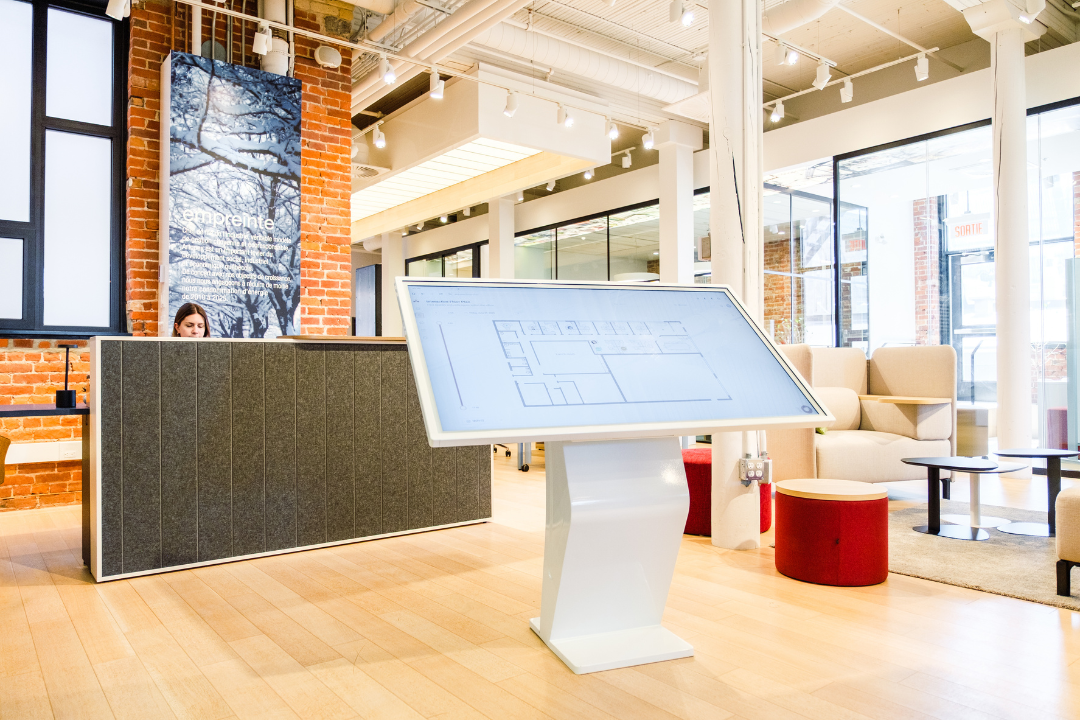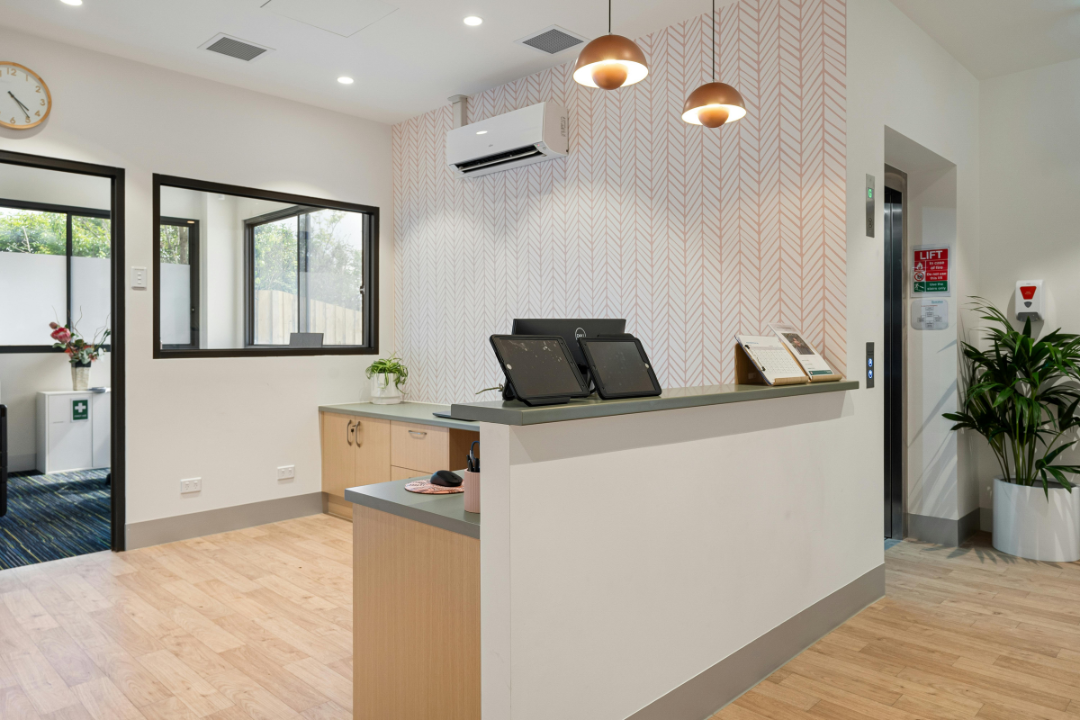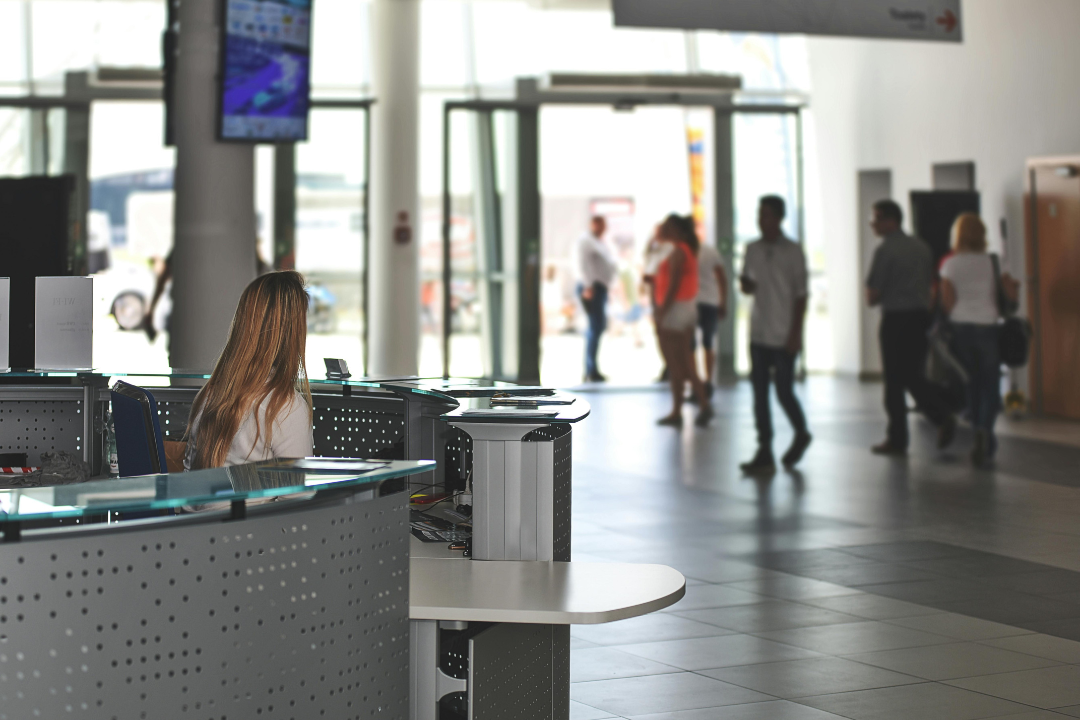Security breaches, compliance failures, and frustrating visitor experiences happen more often than we’d like to admit. A guest shows up unannounced, a delivery driver enters the wrong door, or a sign-in sheet goes missing. Each moment exposes your organization to risk.
You already know this challenge well. You need effective visitor management protocols that don’t just check boxes but truly improve security, efficiency, and experience.
In this article, we’ll share 15 proven visitor management strategies, from digital tools and pre-registration to host notifications and data privacy. Each one will help you create a safer, smarter, and more welcoming workplace.
Core Visitor Management Strategies That Drive Results

Implement Pre-Registration Systems for Seamless Check-Ins
Pre-registration might sound simple, but it transforms your visitor flow. When guests send their details ahead of time, we can prepare badges, verify identity, and generate QR codes for contactless entry.
With automated notifications and digital visitor management tools, the check-in process becomes faster, more accurate, and far more professional. In corporate offices or multi-tenant buildings, pre-registering frequent guests and meeting attendees reduces wait times and ensures a smooth check in process.
It’s one of the easiest ways to improve efficiency, collect better visitor data, and enhance security.
Deploy Digital Visitor Management Software to Replace Paper Sign-In Sheets
If you’re still using paper sign in sheets, it’s time to evolve. A digital visitor management system captures visitor photos, timestamps, and host information while ensuring data encryption and secure storage.
Compared to handwritten logs, digital systems eliminate errors, enable real-time reporting, and simplify keeping visitor records for legal compliance. You can choose between cloud-based or on-site solutions depending on your organization’s needs.
Learn more about our Visitor Management System here
Establish Tiered Access Control for Different Visitor Types
Not every visitor should access every area. We should segment by visitor types—contractors, delivery personnel, clients, job candidates, or VIPs—and manage their entry with access control systems.
Visitor badges and ID badges linked to permissions ensure people move only where they’re authorized. In sensitive areas, employee escorts can guide visitors while maintaining compliance and safety. This approach improves workplace security without feeling restrictive.
Create Real-Time Visitor Tracking & Monitoring Systems
We must always know who’s on-site. Real time tracking tools and visitor dashboards help us monitor visitors from arrival to exit, showing visitor numbers and activity in one view.
During emergencies or evacuations, this data supports safety protocols and emergency procedures. Analytics also reveal visitor patterns and peak times, helping us optimize scheduling and operational efficiency.
Automate Host Notifications for Faster Response Times
No one enjoys waiting in the lobby. With automated host notifications, employees receive instant alerts by SMS, email, or integrations like Slack or Microsoft Teams.
These instant alerts shorten wait times, reduce pressure on the front desk, and make visitors feel expected. Whether it’s a delivery, an interview, or a board meeting, automation adds professionalism and speed to the experience.
Implement Comprehensive Visitor Badge Systems
Badges are more than stickers. A good visitor badge system clarifies identity and access. Printed or digital badges should include the visitor’s name, photo, host, and visit time.
Using color codes for different access levels helps security staff quickly identify who belongs where. Pair this with photo capture during check-in, and you strengthen your access control and visitor experience.
Strengthen Security Protocols & Threat Detection
Visitor management important isn’t just about efficiency, it’s also about enhanced security. Use ID verification tools, video surveillance, and watchlist management to identify risks before they become incidents.
Integrating your visitor management system with on-site security staff ensures quick response to any irregularities. Still, the goal is balance: protect your site without intimidating guests.
Optimize Check-In Experience with Contactless Technology
Contactless check in has become an integral part of modern workplaces. QR codes, mobile apps, and self-service kiosks speed up entry while reducing touchpoints.
Visitors appreciate the convenience, and organizations benefit from cleaner data and shorter lines. The combination of speed and security defines modern visitor management solutions.
See how our Touchscreen Kiosk enhances contactless check-in
Enable Multi-Location Visitor Management
Managing visitors across multiple locations requires centralized control. A unified digital visitor management system synchronizes visitor data and maintains consistent policies between sites.
This ensures visitor experiences remain uniform, even across different offices or regions, while giving leaders access to consolidated reports and visitor records.
Ensure Data Privacy & Compliance
Visitor management also means protecting visitor information. Compliance with GDPR, CCPA, and other privacy regulations requires secure data encryption, clear retention policies, and transparency.
Keeping visitor records confidential prevents data breaches and ensures you meet legal requirements in industries like healthcare, finance, or government.
Advanced Visitor Management Best Practices

Create VIP & Frequent Guest Programs
For frequent guests or VIPs, a little personalization goes a long way. Offering expedited check-ins, pre-filled visitor information, or reserved meeting rooms makes them feel valued and respected.
Visitor management software can help recognize returning visitors, automate their entry through QR codes, and log repeat visits to strengthen client relationships. These programs not only improve guest experience but also enhance brand perception and loyalty. Integrated CRM systems can link visit data with customer records, turning every visit into actionable insight.
Optimize Lobby & Reception Areas
Your lobby is your organization’s handshake. A welcoming design, clear signage, and calm acoustics help visitors orient themselves quickly. Simple digital tools, like touchscreen directories or self-service kiosks, guide visitors to the right person or meeting room without confusion.
Reception staff should be trained to guide visitors, verify identity efficiently, and handle unexpected arrivals with confidence. This level of preparedness improves operational efficiency and overall visitor satisfaction.
Leverage Visitor Analytics for Continuous Improvement
Understanding visitor behavior is a key element of modern visitor management strategies. Analytics help identify peak times, track visitor patterns, and measure check-in duration.
With these insights, you can refine staffing schedules, improve front desk workflows, and optimize your access control systems. By keeping visitor records centralized, it becomes easier to generate reports for management or compliance purposes. Continuous improvement depends on monitoring and adapting — data turns visitor management into a strategic function, not just an operational one.
Prepare for Emergency Situations
In any emergency, knowing exactly who’s on site can save lives. Modern visitor management systems automatically generate real-time occupancy lists and communicate safety procedures instantly via automated notifications.
During evacuations, digital roll calls confirm whether all visitors have exited. Integrating visitor data with your safety protocols ensures no one is overlooked, reinforcing compliance and readiness.
Integrate Pre-Arrival Communication
Pre-arrival communication simplifies everything. Sending guests details ahead about parking, building access, or check-in requirements minimizes confusion and keeps visits punctual. Including pre-registration links or QR codes in the message makes the process seamless.
Health questionnaires or NDAs can also be completed before arrival, ensuring a compliant and frictionless experience. A well-informed visitor feels prepared and welcomed, setting the tone for a productive meeting.
Industry-Specific Visitor Management Strategies

Corporate Offices
Corporate environments thrive on organization and speed. High-volume visitor flow demands automated pre-registration, digital check-in systems, and clear host notifications.
Integrating visitor management systems with meeting room booking tools ensures guests move through the site effortlessly. Visitor photos and ID badges maintain professionalism while enhancing workplace security.
Healthcare Facilities
Visitor management in healthcare facilities must prioritize privacy, safety, and compliance. Protecting patient data under HIPAA or similar regulations requires rigorous visitor verification and limited access to sensitive areas.
Visitor management systems in hospitals should support real-time monitoring, digital visitor badges, and visitor access control per department. A clear audit trail of visitor records also helps meet legal and safety requirements.
Manufacturing & Industrial Sites
Factories and industrial plants require heightened safety standards. Contractors, vendors, and inspectors often visit restricted zones where specific safety gear or supervision is mandatory.
Digital visitor management software with access control systems ensures only authorized personnel enter hazardous zones. Linking visitor badges to training or certification data helps enforce compliance, preventing security threats and improving safety outcomes.
Multi-Tenant Buildings
Multi-tenant properties present unique visitor management challenges. With multiple businesses under one roof, keeping visitor records organized and secure becomes complex.
Digital directories, QR code-based check-ins, and centralized physical security systems simplify the process. Tenants can customize their visitor experiences while maintaining shared security standards for the building. Data synchronization across floors or business units ensures every visitor is accounted for, from lobby entry to departure.
Make Every Visitor Count with elia
Ready to move from paper sign-in sheets to a modern solution? elia brings these visitor management strategies to life with a digital visitor management system that enhances security, efficiency, and visitor experience.
Our platform combines:
- Digital check-in via touchscreen kiosk
- Pre-registration and QR code access
- Real-time visitor tracking and host notifications
- Comprehensive visitor data management and reporting
See how elia can work for your workplace. Book a free demo today and start creating a safer, smoother visitor experience.


.png)


![How to Manage Hot Desking: The Operational Playbook [2025]](https://cdn.prod.website-files.com/64f88f68249f7cafe071d150/6914de3ce11d1e5b51acaefb_147.png)